- The Key Difference Between Python and Java
- What is Java?
- What is Python?
- Python vs Java: What's the Difference?
- Java vs Python: Which is Better?
- Frequently Asked Questions
Difference Between Java And Python Decoded
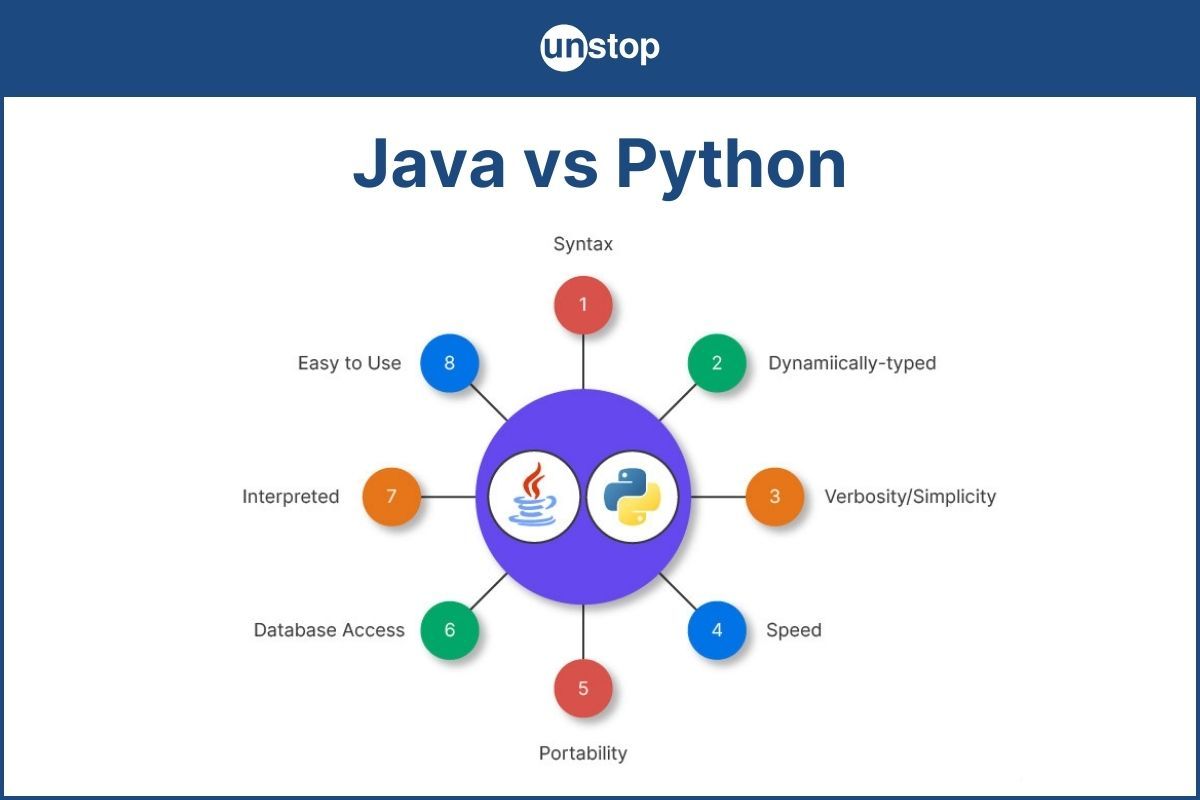
Java is an object-oriented language developed for compatibility on various platforms. Python is a popular language, considered more of a scripting language. It's a dynamically-typed language with variables that facilitate increased readability and ease of use. The distinction between the two can be difficult to grasp; however, this article will offer a synopsis of the primary difference between Java and Python.
Python and Java are widely used for web application development and artificial intelligence research, making them two of the most powerful programming languages. When comparing the two, it’s important to consider factors such as syntax differences and speed/performance implications as application support when deciding which one might suit your project requirements better.
The Key Difference Between Python and Java
The major difference between Python and Java is their language type.
Python is an interpreted, high-level, general-purpose programming language, while Java is a class-based, concurrent object-oriented programming language. Python has simple syntax, making writing programs in fewer lines easier than other languages. Java focuses more on readability over conciseness with its long code blocks or lines of code that use semicolons and curly braces.
Python emphasizes code readability by using indentation for program flow rather than relying on closing parentheses or brackets like similar languages do. This makes writing code simpler because unnecessary symbols are not needed - freeing up time for coding instead of debugging problems due to misplaced punctuation marks being used incorrectly.
Java offers faster execution times than Python, largely because Java compiles down into platform-independent bytecode before executing. In contrast, Python interprets each line from the source one at a time, resulting in slower runtimes but giving developers freedom when working with various libraries. This allows coders greater flexibility versus having most functions tied directly into the interpreter, as seen typically within Python.
What is Java?
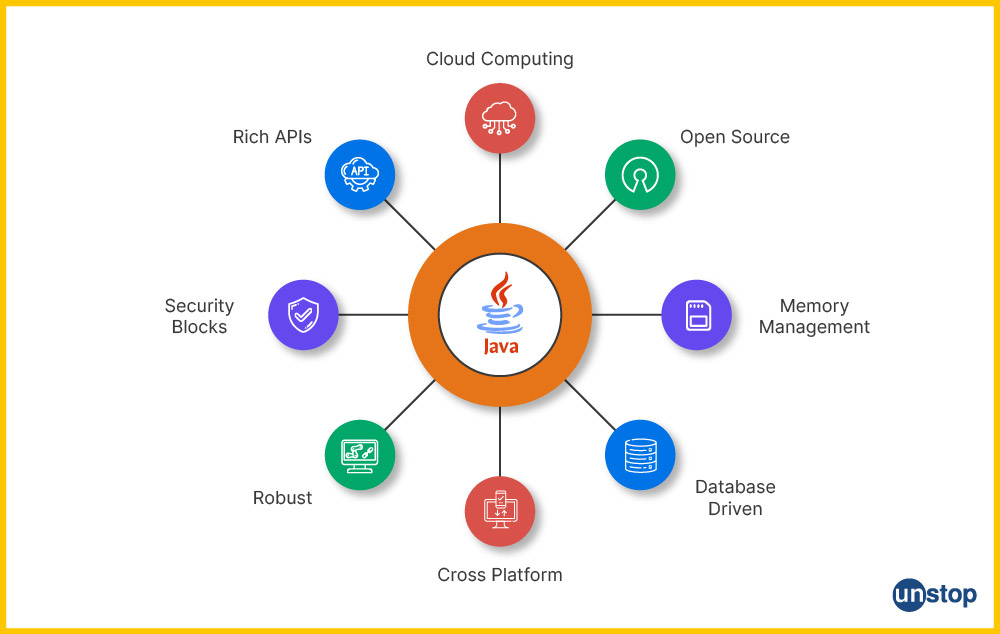
Java is an object-oriented language, class-based, concurrent language designed to achieve as few implementation dependencies as possible. Java applications can run on any computer with a Java Virtual Machine (JVM) installed, regardless of the underlying operating system or hardware architecture.
It's used for writing software on the server side in web applications and websites like eBay and Amazon and in standalone programs such as games or media players. Additionally, most modern mobile phones use some form of embedded Java code to support user interfaces and other operations within their devices.
It's also available for PCs running Windows 10 through the Microsoft Store under the name 'Java Edition'. Companies such as NASA, Google, and Twitter rely heavily upon Java application servers to power their website backends. In contrast, several major financial institutions leverage it heavily in legacy systems due to its scalability characteristics, among other reasons.
History of Java
Java is a popular programming language developed by James Gosling at Sun Microsystems in the early 1990s. The original goal of Java was to provide an object-oriented replacement for C and C++ languages and be platform-independent so it could run on any system without recompilation.
In 1995, Sun Microsystem released its initial version of Java, known today as “Java 1.0,” which included basic features such as primitive data types and classes with methods. It also introduced the concept of applets, which are small applications written in Java that can be downloaded from websites or sent via email and then executed within a web browser running on either PC/Mac or Linux machines.
Features of Java
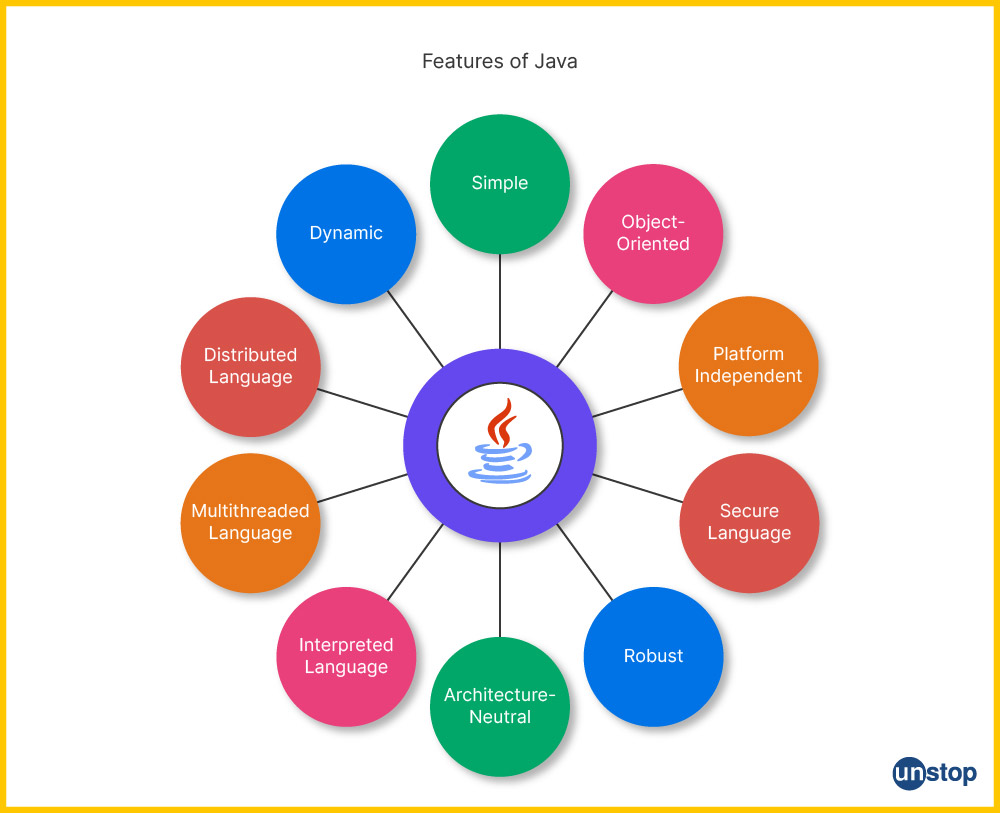
1. Platform Independent: Java is a language that can run on any platform without affecting the system's performance. Since it uses byte codes instead of compilation, it does not need to be changed for many platforms.
2. Object-oriented: It's an object-oriented programming language that allows developers to create reusable code and module programs. This allows them to take advantage of existing code when creating new applications or components in their environment while preserving integrity across all systems connected with objects and classes.
3. Memory Management: Java provides automatic memory allocation management, which helps save time by freeing up resources from unused different types of variables so they can be allocated elsewhere as needed without manual intervention from programmers.
4. Security: One major feature of Java is its security model. Sandboxing methodologies such as static type checking at compile time with dynamic loading & verification at runtime ensure that program snippets running in one application have no access or effect over data being processed by another applet.
5. Multi-threading: Java supports multi-threading, allowing multiple tasks to be performed simultaneously within a single program - leading to improved performance and smoother user experiences across devices/systems.
6. Garbage Collection: Java also has a built-in garbage collection system that automatically frees up memory allocated for objects when no longer needed, ensuring efficient resource usage and eliminating potential memory leaks.
7. Exception Handling: With its powerful exception-handling capabilities, Java offers a way to detect unexpected errors during program execution and respond accordingly – preventing crashes from occurring unexpectedly in the first place.
8. Simple to learn and use: Java has a simple, clear syntax, making learning easier than other languages, such as C/C++. It's also more consistent since there are no ambiguous features or functions that need clarification every time a programmer wants to understand code written by someone else in the same language.
Advantages & Disadvantages of Java
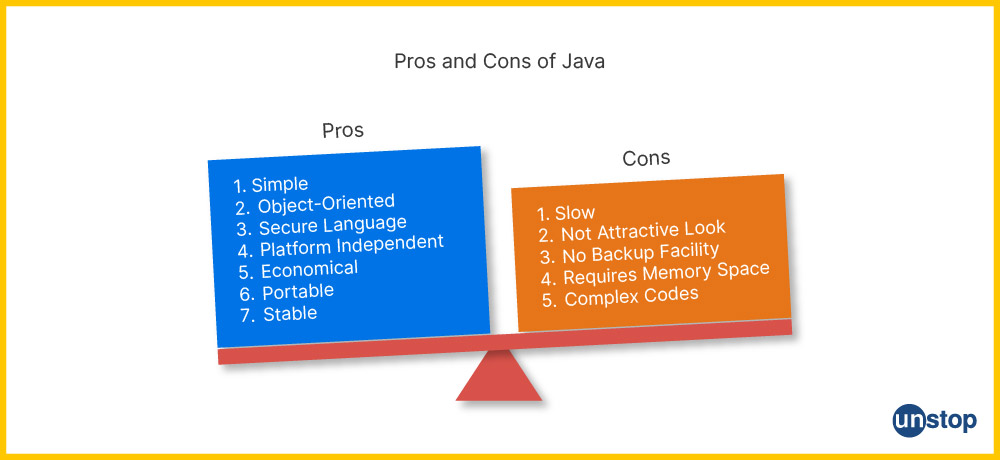
Advantages of Java
1. Platform Independent: Java's most significant advantage is its ability to move easily from one computer system to another. The code in Java can be run on all platforms that support it without requiring revision or recompilation.
2. Memory Management: Unlike other programming languages, such as C++, which require manual memory management and garbage collection, this language manages memory automatically through Garbage Collection (GC). This simplifies the development process and increases performance and reliability because unnecessary objects are not taking up resources.
3. Simplicity in learning: Compared to other languages like C++ or Python, Java has a much simpler syntax structure with fewer lines required to accomplish tasks, which makes it easier for both novice and experienced programmers alike to learn quickly and start coding almost immediately.
4. Secure: Security was built into every layer when developing the language so that applications created using it could protect themselves against attacks by malicious users. Making use of technology such as bytecode verification ensures that only validated commands will execute within the environment, preventing hacks or corruption from occurring at runtime.
Disadvantages Of Java
1. Slower Performance: Java is always interpreted as its programs have been designed with an interpreter in mind. This makes the execution process slower than that of compiled languages like C.
2. Complex Syntax: The syntax used for writing programs in Java can be quite complex and intimidating at times, which means it's not always easy to pick up, especially if you have no prior experience with other languages.
3. Limited API Support: Java is limited regarding Application Programming Interfaces (APIs). This means developers may need help implementing certain features into applications due to a lack of support from the language itself.
4. Expensive To Maintain: Due to its nature as an interpreted language, Java requires a lot more resources compared to others, such as C++ or Python, making regular maintenance expensive over time.
What is Python?

Python is a general-purpose programming language, high-level and interpreted. Thanks to the large library of pre-written code, Python is a quick and efficient choice for jobs ranging from database access to GUI construction, web development, and system management.
The main usage areas for Python include scripting & automation (web scraping/crawler), Artificial intelligence (AI) and machine Learning (ML), software engineering, Data Science, and Big Data Analysis, amongst others, due to its simple syntax. This allows programmers to complete their tasks quickly by writing fewer lines than traditional languages like Java or C++.
Some major companies using Python for their businesses are Google, Facebook, Netflix, Dropbox, and Instagram, to name a few. It is being increasingly adopted for data analysis, machine learning and more, as they all require powerful tools to help analyze large datasets, build effective predictive models, etc. Python assists with activities like automation, which can cut development costs while producing excellent outcomes.
History of Python
It was created in the late 1980s by Guido van Rossum at Centrum Wiskunde & Informatica in Amsterdam. It is a high-level scripting language emphasizing code readability with its notable use of significant whitespace. Python supports multiple programming paradigms, including object-oriented, functional, or procedural styles.
The first version of Python was released on February 20th, 1991, as version 0.9.0, with new versions released every few years since then, culminating in the release of 3.6 in December 2016, which marked the end of support for the previous 2 variants. The latest version was introduced when many libraries started to drop python2 from their releases primarily due to security concerns stemming from outdated features and lack of modern implementations.
Features of Python
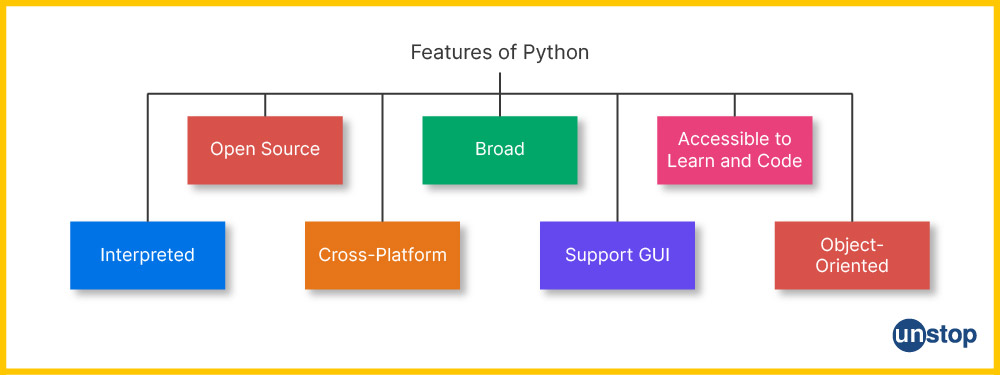
1. Easy to learn: It is one of the easiest languages for beginners due to its simple and concise syntax, which makes it easier for a beginner to grasp the language quickly.
2. Interpreted Language: It's an interpreted language, meaning that code does not need to be compiled before being executed by Python applications or implementations like CPython and IronPython. This makes development faster and more flexible as you don't have to switch between multiple environments during coding sessions.
3. Cross-Platform Language Support: With support from different platforms such as Windows/Mac/Linux/Raspberry Pi, etc., a single piece of code can be written in Python that will execute on almost any device with minimal modifications required (if any).
4. Extensive Library Ecosystems and Frameworks: One reason why developers are so fond of using Python is because of how vast its library ecosystems are - having libraries specialized in fields ranging from web scraping (BeautifulSoup), machine learning applications (sci-kit-learn), natural language processing (NLTK)and many more! This helps speed up development significantly since all necessary tools are readily available without much work needed. Additionally, plenty of third-party frameworks exist, such as Django, Flask, etc., allowing further customizations and streamlining of development processes.
5. Versatility: Python is highly versatile, potentially creating almost any application - from simple web scripting to complex machine learning algorithms! With its flexibility and wide array of libraries available, it has become an incredibly powerful language for both high-level & low-level programming tasks.
6. Strong Community Support: Due to its popularity among developers, Python offers one of the most active and helpful communities out there in terms of support and guidance during development stages; this makes troubleshooting/debugging significantly easier as you can get quick responses within minutes instead of hours or days.
Advantages & Disadvantages of Python
Advantages
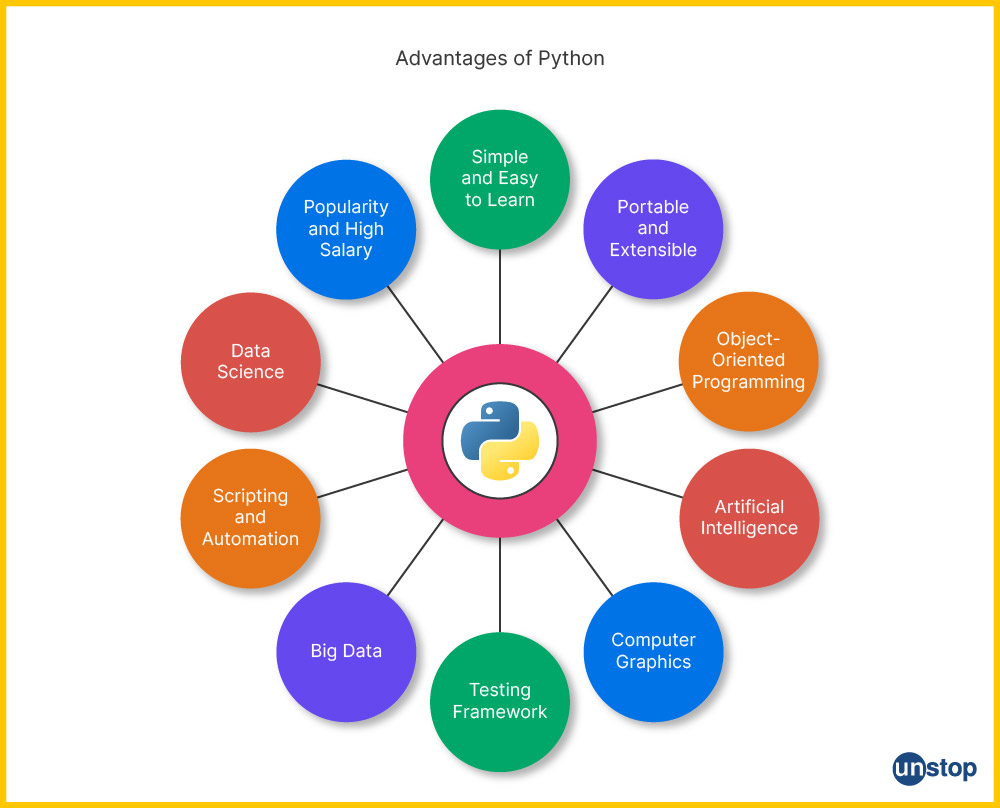
The three main advantages of Python are:
1. Easy to Use and Learn: It is a high-level programming language designed to be easy to read and simple to implement. This helps beginner coders harness their skills more quickly than other languages, allowing them more time for creativity in their projects.
2. Versatility: Python can be used for more than just web development - from data science and AI/ML algorithms, to game development or even home automation services like Philips Hue lighting systems, meaning you don't need multiple coding languages when creating different products.
3. Abundance of Third-Party Modules: The PyPI (Python Package Index) repository hosts thousands of third-party modules that provide prewritten functionality for developers looking to speed up their process significantly with less code needed overall per project – saving valuable time and energy.
Disadvantages

The three main disadvantages of Python are:
1. Speed Limitations: Due to its dynamic nature as an interpreted language, processing speeds are not optimized compared with compiled coded alternatives, which could make it unsuitable depending on individual application needs, such as those where high-performance optimization is necessary.
2. Memory Consumption: While memory consumption isn't typically an issue under normal circumstances, within some scenarios, user-defined objects may consume more memory than necessary. This can cause issues if this isn't monitored correctly.
3. Database Access Layer: Python has an outdated database access layer and lacks a unified interface – meaning it's difficult to switch from one type of database, such as PostgreSQL, to other types, like MySQL, without writing large amounts of additional code blocks.
Python vs Java: What's the Difference?
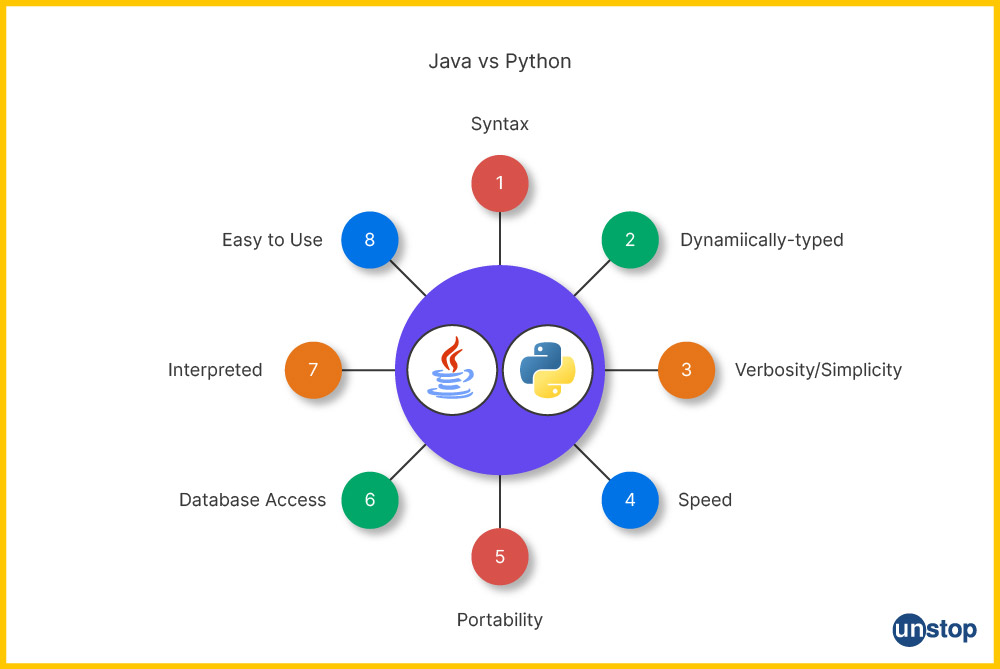
Here are the key differences between Python and Java:
|
Criteria |
Python |
JAVA |
|
Syntax and Readability |
Python is known for its clean and concise syntax, making it easy to read and write code. |
Java's syntax is more verbose compared to Python, which can lead to longer code. |
|
Type System |
Python uses dynamic typing, meaning variable types are determined at runtime. |
Java is statically typed, requiring explicit type declarations for variables. |
|
Ease of Learning |
It is often recommended for beginners due to its simplicity and readability. |
Java can be more challenging for beginners due to its strict syntax and concepts like object-oriented programming. |
|
Speed |
Python is generally slower than Java because it's an interpreted language. |
Java is typically faster because it's compiled to bytecode before execution. |
|
Platform Independence |
Python is cross-platform, with interpreters available for various operating systems. |
Java is known for its "write once, run anywhere" principle, thanks to the Java Virtual Machine (JVM). |
|
Community and Libraries |
Python has a large and active community, with a vast ecosystem of libraries and frameworks. |
Java also has a strong community and a wide range of libraries, particularly for enterprise applications. |
|
Concurrency |
Python's Global Interpreter Lock (GIL) limits the ability to fully utilize multi-core processors for parallel execution. |
Java provides more robust support for multithreading and concurrency. |
|
Web Development |
Python has popular web frameworks like Django and Flask for web development. |
Java has web frameworks like Spring and Java EE for building web applications. |
|
Mobile App Development |
It can be used for mobile app development with frameworks like Kivy and PyQT. |
It is commonly used for Android app development, thanks to the Android SDK. |
|
Community Support |
Python has a strong presence in data science and machine learning, with libraries like NumPy and TensorFlow. |
It is widely used in enterprise software development, particularly in large-scale systems. |
|
IDE and Tools |
Python offers various IDEs like PyCharm and Jupyter Notebook. |
Java has popular IDEs like Eclipse and IntelliJ IDEA. |
|
Popularity |
Python has been gaining popularity for its versatility and use in data science. |
Java has a long-standing reputation and is widely used in enterprise and web development. |
|
Job Market |
Python-related job opportunities have been on the rise, particularly in data science and web development. |
Java remains a staple in enterprise software development and offers a stable job market. |
Java vs Python: Which is Better?
Java and Python are both powerful languages that have their strengths and weaknesses. When choosing between the two, it's important to focus on what you need a language for and your skill level with each one.
Java is an object-oriented programming language owned by Oracle Corporation. Its syntax was derived from C/C++, so experienced developers feel comfortable in this environment with its familiar commands and structure. It's very reliable thanks to its strict compile process, which catches errors quickly, such as those related to type safety (which are not caught until run time in dynamic languages).
Because of its static typing system, code written in Java tends to be more efficient than code written using other methods or libraries. Newer releases allow for just-in-time-(JIT)compilation leading to better performance results too when compared with previous versions of the platform.
Finally, once compiled into bytecode, application files can easily be deployed onto any standard virtual machine regardless of the underlying operating system since they all support the so-called JVM (Java Virtual Machine).
Python, on the other hand, is an interpreted scripting language known for being easygoing. For example, regarding coding style rules, indentation instead of curly braces makes up most of them. Plus its vast collection of libraries usually provides developers with options to solve complex problems cleanly and in a straightforward manner, expediting development and testing cycles.
In conclusion, both languages have their pros and cons; ultimately, which one is better depends entirely on what your needs are. For tasks that require speed, reliability, or scalability, Java would likely be a good choice. Whereas, if flexibility or sheer readability is more important then Python could offer an advantage.
Frequently Asked Questions
1. Should I learn Java or Python first?
Individual learning goals and objectives will ultimately determine this. Both are well-liked, potent programming languages with several uses in the creation of software. Java is a statically typed language, making debugging easier since errors can be spotted earlier. In contrast, Python is dynamically typed, making it simpler to write code but more difficult to debug any issues that may arise as the program runs.
2. Can Python replace Java?
As for replacing one another, no. Both have different strengths, and you should consider what development field best suits your purpose before deciding which language will suit you better. For instance, if you're looking for server-side scripting, Java would be preferred over Python due to its scalability features. At the same time, if mobile application development or web scraping is needed, Python would be the ideal choice, given its versatile libraries that support key frameworks optimized for such tasks without hassle!
3. How do you work with numeric computing in each language?
In Java, numeric computations require data types to be explicitly cast. In Python, this step is not necessary due to its implicit conversion capability during assignments or calculations. This allows developers more time to focus on developing algorithms rather than dealing with casting issues when working out large problem sets leveraging numerics-based approaches - such as linear algebraic operations which run far better under Python's managed memory architecture.
4. What types of applications can be created with Java or Python?
1. Web Applications: Java and Python can create dynamic web applications that run in a browser.
2. Desktop GUI Applications: Java and Python have powerful libraries for creating graphical user interfaces (GUIs) on the desktop, such as Swing or Tkinter (Python).
3. Mobile Applications: Both languages have frameworks to develop mobile applications with native look-and-feel, such as Kivy (Python) and Android SDK/JavaFX via RoboVM (for Kotlin & Java).
4. Machine Learning & Artificial Intelligence: Libraries like ScikitLearn, Keras, and TensorFlow make machine learning very easy with Python, whereas Weka is a popular choice among data scientists using Java for ML & AI tasks.
5. games Development: Games development using either language requires some knowledge of game engines, but you can use the Pygame library to develop simple 2D games rapidly in Python.
5. How does the compilation process compare between the two languages?
While both languages compile their source codes into bytecode before being executed by the target machine, Java compiles the source once and saves this file. In contrast, Python does not store but rather recompiles its source code each time it runs, which adds an extra layer of processing requirements due to having to check all variables twice at runtime without storing files between executions. However, Java requires longer compilation processes because it statically checks all variable declarations beforehand whereas Python dynamically marks them during execution thus resulting in faster development times overall despite double-checking inputs.
6. Java vs Python: Is one language easier for junior developers to learn than the other?
Generally speaking, most experienced software engineers agree that Python is the easier language for junior developers to learn in comparison with Java due to its lack of ambiguous syntax structure, simple yet robust sets of commands that can be leveraged for a variety of tasks, and a wider range of applications' built-in features.
7. How does the code volume compare between Java and Python?
Python code tends to have less complexity than Java as it requires fewer lines per segmented task, often using shorter chunks. This lends itself towards simplifying program logic compared to more verbose languages like Java programming that require semi-colons at the end of each line, creating bulkier volumes when written out. Even if they all serve similar functions, Java programming results in overall larger programs authored primarily via object-oriented paradigms making Python the preferred choice amongst many coders who value minimalism over type conventions.
8. Does either language offer better quality control when examining files?
Both languages offer multiple toolsets, namely lint and static analyzers, which are used by developers extensively while debugging or examining code files. While Javas toolset consists mainly of compiler plugins, Pythons libraries provide sophisticated hooks from third-party development teams, allowing greater access into potential areas where errors may lurk thus providing better quality control for those inspecting code files for any discrepancies or security vulnerabilities.
9. Does one language offer more library support than the other?
Both languages have an extensive library of available packages to choose from, as well as comprehensive, integrated development environments (IDEs) that support multiple frameworks for mobile computing or web scripting applications. However, generally speaking, Python has larger standard libraries that can provide greater functionality with fewer lines of code than Java requires - thus making it faster to develop software using Python's coding capabilities versus those utilizing Java-based technology stacks.
You might also be interested in reading:
- What Is The Difference Between Computer Architecture And Computer Organization?
- Difference Between DDL And DML Command In DBMS - Explained!
- Difference Between Encoder And Decoder Explained!
- Difference Between Static And Dynamic Memory Allocation (With Comparison Chart)
- What Is The Difference Between HTML and CSS?
I’m a reader first and a writer second, constantly diving into the world of content. If I’m not writing or reading, I like watching movies and dreaming of a life by the beach.
Login to continue reading
And access exclusive content, personalized recommendations, and career-boosting opportunities.
Subscribe
to our newsletter
Blogs you need to hog!

This Is My First Hackathon, How Should I Prepare? (Tips & Hackathon Questions Inside)

10 Best C++ IDEs That Developers Mention The Most!

Advantages and Disadvantages of Cloud Computing That You Should Know!













Comments
Add comment